It was June 10th. I was at a birthday party for a family member. I had gorged myself on one helping after another. Seconds, then thirds. At the end of the main course I was so stuffed that I was sweating. Did that stop me from having a piece of pie?

Not even close. But surely, it stopped me from that second piece? After all, I was already unpleasantly full.

Two was plenty, can’t be having three now, can we? There’s just no way we can fit that in there.
Surely, after three generous helpings of pie I said no to those three cups of decaf coffees with Bailey’s Irish Rum topped off with whipping cream?

I think we all know the answer to that one.
I’d been having issues with my waistline before that night. It had grown so large that it always protruded well over my belt, sometimes painfully so. This had happened so slowly that I had found myself in a state of denial. Sure, I knew that I was getting fat, but I simply wasn’t the type of person to be fat. There was nothing to worry about, I remained a temporarily embarrassed fitness model.
I didn’t live with easy access to a scale, a problem I fixed after that night, and hadn’t been to the gym in years. Sitting there, sweating because my stomach was so engorged, and inebriated with many cups of sparkling wine and Bailey’s, I decided to use the opportunistic change of venue to weigh myself. They had a scale, and I simply needed to know.
I stepped on Mr. Scale. He said and I quote:
Lol. LMAO even.
Which translates to “198.4 lbs”. A family member snapped my pic at the exact moment I learned what a fat tub of lard I was. You see it before you now.

It’s not the weight itself that bothered me. I played my last year of junior hockey between 190 and 195 lbs. I didn’t have a shredded six pack physique, but I sure wasn’t a fattie back then.

After my hockey career was over I continued working out on a semi-regular basis, occasionally doing BJJ and other sports, and generally trying to get bigger. For the longest time in my life I couldn’t put on weight if I tried, but I had figured out that I could stuff myself with whatever, and then, after being stuffed, shove a few glasses of whole milk down my throat. Doing this I “bulked” up to 210 lbs, saw that I was actually just fat, and lost the weight in the blink of an eye back down to around 195 lbs.
Sometime shortly after that I got burnt out on weightlifting and stopped going to the gym, in part because of a few nagging injuries. I progressively lost weight, and in less than a year I was all the way down to 175 lbs. This was the case even though I always maintained a fairly regular regiment of running or indoors biking, if for no other reason than getting the energy out of my legs to help me get to sleep.
Sadly, I looked fatter at 175 than I had at 195. I might not actually have had more fat on me, but it sure looked that way due to the loss of muscularity. It’s interesting how I had put on muscle so gradually over the years as a teen that I didn’t realize I was doing it until I stopped weightlifting and dropped at least fifteen pounds of muscle, maybe even twenty.
Every fat loss journey has an equal and opposite fat gain journey. Mine is that I put back on some of that weight. Then I put back on some more. Then some more. Then more still. Finally, never being able to pinpoint the exact moment when I became a sloppy fat tub of lard, I tipped the scales at 198.4 lbs. I didn’t regularly weigh myself, but each snapshot in time showed a marked progression towards my true final form.

Enough was enough, and I instantly decided to make some changes. Indeed, the very next night just before supper, having not eaten that day to burn off the gorge-fest, I weighed a very slim 192.4 lbs, having lost six pounds of fat in just 24 hours!

Since there are 3500 calories in a pound of fat, that means that I burned off a total of 21,000 calories in the roughly 24 hour period between meals!
Obviously that didn’t happen. The problem is that your weight can heavily fluctuate within a day, which makes any individual weighing a relatively crude estimation of your body weight. For me, these fluctuations tend to work out to about six pounds plus or minus, provided I’m not doing anything too extreme.
The single day fat loss is a joke. However, taking these numbers with a grain of salt, I started out weighing an average of around 195-196 lbs, and, not even a full four weeks later, am down to an average of 185-186 lbs, maybe lower. The scale regularly shows me a number in the low 182 range, and maxes out at less than 189 lbs. How did I do this?
First, all junk food – non-diet pop, chips, chocolate, etcetera – was to be entirely cut out. I have a very aggressive definition of “junk food,” which even includes things like salami and other cold cuts, hot dogs, and processed cheeses. It also includes everything you’ll find at this kind of establishment, although I was already not eating at these kinds of places.
 Second, absolutely no liquid calories, not even juice, smoothies, or other arguably healthy drinks, although sauces as part of a meal are of course fine. This is general diet recommendation, and fit with my personal experience of using whole milk and smoothies post meals to put on weight. If liquid calories helped me gain fat, then cutting them out will probably help me lose fat.
Second, absolutely no liquid calories, not even juice, smoothies, or other arguably healthy drinks, although sauces as part of a meal are of course fine. This is general diet recommendation, and fit with my personal experience of using whole milk and smoothies post meals to put on weight. If liquid calories helped me gain fat, then cutting them out will probably help me lose fat.
Third, absolutely no alcohol. Technically this is covered with rule 2, but I felt the need to make it explicit. Alcohol is terrible for you, is typically bundled with a ton of sugar, and lowers the inhibitions against eating more garbage.
Fourth, absolutely no eating until I get hungry. The first three rules shouldn’t be too controversial. However, the fourth requires breaking some dietary pseudoscience masquerading as health advice. We’ve already seen an example of this above when, after the birthday binge, I didn’t eat again until dinner the next day. Nor did I drink anything but one cup of black coffee.

This kind of “diet,” would surely ruffle a few feathers amongst health gurus. Or maybe I accidentally followed some new trend without knowing about it and they all love me. What I do know for sure is that even by dinner the next night I still wasn’t hungry in the slightest. I ate dinner anyway, because of secret rule 5:
Even if not hungry, I have to have a big meal a few hours before bedtime, because trying to sleep on an empty stomach is impossible torture. There’s no need to get into fasting, especially when hitting the gym on a regular basis.
I don’t think that going more than a full day without eating is healthy. However, I have done that before. Back when I was in my early twenties I once ate an entire 1 KG package of perogies, plus 1 lbs of cheese, plus 1lbs of bacon, plus plenty of accompaniments such as sour cream, in one sitting for dinner. I did some crude calculating and it works out to well over 6,000 calories for the whole meal. To put that into perspective, the average man’s daily caloric intake is just under 2500 calories, 3,000 if you’re very active. Sure, this was before I quit weightlifting and I was quite active, but I also ate a big breakfast and lunch. Honest to God, I might have packed down 10,000 calories for the whole day.
The next day I ate: nothing. I simply had no desire for food, so I didn’t eat any. I don’t point this out as an endorsement of some sort of binge to fasting eating cycle. Nor did I do this as some sort of science experiment out of intellectual curiosity. I did it because perogies, bacon, cheese, sour cream, and a tasteful smattering of chopped green onion, is absolutely ****ing delicious, and I felt like it. Then the next day I didn’t eat because I didn’t feel like it.

I had never gone a day without eating before, haven’t since, and do not plan on doing so anytime soon. However, it did teach me something about my body. The signals for hunger actually mean something, and cramming three meals a day into my body just to eat the “healthy” way doesn’t make much sense. This was reinforced by early morning breakfasts often making me feel moderately ill afterwards, with no adverse effects noticed when skipping them.
While it isn’t the focus of this piece, I’ve truly grown to loathe the “content creators,” in the health-fad sphere. They are, in their own way, just as bad as everything else on modern YouTube.
It is extremely difficult, almost impossible in fact, to transcribe video with the setup that I currently have, so I’ll get to buddy over here in another entry. I’ve lived through so many of these ever changing “you HAVE to eat breakfast, no wait you have skip breakfast, low carb, no high carb, can’t eat fats, must eat fats, intermittent fasting, no wait six meals per day to stoke that metabolic fire,” and so on and so forth in a never ending cycle of grifting and pseudoscientific novelty takes. There are so many of these trendy fads that come and go that I’ve simply learned to ignore them. Nevertheless I think it could be beneficial for the younger audience to see a brief takedown of this kind of garbage, so that will come in a later piece.
Coincidental to all of this is my recently announced vacation. It’s wrapping up now, but I’m maintaining a healthy weight fluctuating between 182-188 lbs, a full ten pounds lighter than what I was just over three weeks ago. During the vacation I definitely had a few bowls of ice cream, some snacks, and I hit the sauce quite hard one day, while abstaining on all the others. Nevertheless, I stuck to my routine with decent consistency considering the circumstances, and still think that I lost about a pound, although it’s difficult to measure a weight change that small with the weight fluctuations of a typical day. I consider this to be extremely encouraging, as it indicates that I can continue rapidly losing fat when I restart in full after getting home.
They say that diet is the most important part of body composition, but the other major part of my routine has been getting back into the gym every second or third day, depending on how sore I am. After going too hard to begin, I have gotten into a consistent flow of usually being just a touch sore the next day. Video of my workout routine can be seen below.
I don’t have any unique insight as to what exercises people should do, and there are plenty of personal trainers politically adjacent to us that you can turn to who could help you more than myself. However, I did go on something of a video watching binge for both nutrition and workout stuff, and I can safely say that 99% of that, even being apolitical, is either worthless or actively harmful. More on that in a later piece.
I’m still running pretty much every non-weightlifting day, and doing a very hard five minute bike warmup involving sprinting when I’m at the gym. But there’s no question that weightlifting has been the primary new activity that I’ve been doing. This is in part because weightlifting is the best way to put on muscle, and I’ve decided to spend at least three months consistently doing that. But it’s also important because improving on your lifts is a great proxy for not losing lean body mass, something that is always a concern when dieting. So, how has that gone?

Two thumbs up for the progression. Two thumbs down for the abysmal starting strength level that I found myself with. To quantify this somewhat, back when I was 19, I used to squat 135 lbs fifteen times… as a warmup. I would then move on to something like 5×5 with 315 lbs. I only warmed up with 135 because it was convenient to slap the 45’s on both sides and do a quick set to get the blood flowing.
Since I don’t have a squat rack at home, and my knees have somewhat deteriorated, I’ve been preparing for the gym by doing body weight timed squats. This is where you get down into the bottom position and then hold it for a certain amount of time. I’ve been getting up to one starting rep of one full minute holding, thirty seconds off, and then continuing thirty seconds on and off for up to eight more reps before I just can’t maintain the hold any longer. This is not exactly an athletic marvel, but surely with all this conditioning I should be able to bang out a decent number of squats at the gym, right? That’s doubly true, since I’ve also been doing regular body weight squats just to get work done throughout the full range of motion.
I decided to be smart with it, and not kill myself the first time I went. I put 25 lbs plates on both ends, for a 95 lbs squat, the bar is 45 lbs if you were wondering how the math worked. I proceeded to max out at 12 reps.

Even that is overselling my performance, because I took three mini breaks when doing that, starting after the sixth rep. I probably had only about 8 reps of performance in my legs. The only reason why I did 12 reps was because I couldn’t quite believe myself incapable of not doing at least ten reps of 95 lbs squats. Then, being a moron, I decided to do a full four sets of this, with diminishing rep counts, before leaving the gym. The thinking was something along the lines of “well, I only squatted 95 lbs for 12 reps, so I need to do four sets to really get the workload in.”
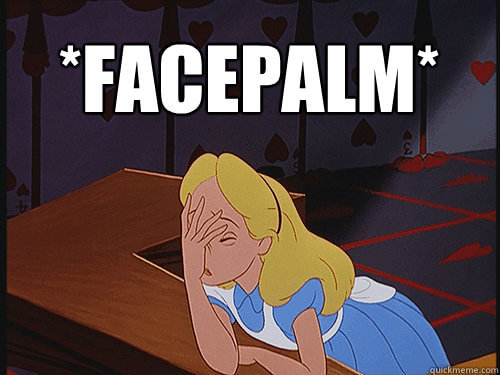
I did similar volume for the upper body exercises, and couldn’t go back to the gym for a full five days afterwards. That first day after my titties hurt just from jiggling a bit when going up and down the stairs. Even five days later, when I again made it back to the gym, I was still a bit sore.
In hindsight, I should have done just one single set for each exercise that first day, and worked my way up to appropriate volume slowly. I should also have kicked it down to at most two sets for the second day at the gym, but my pride wouldn’t let me “move backwards,” and forced me to skip the gym again for another three days.
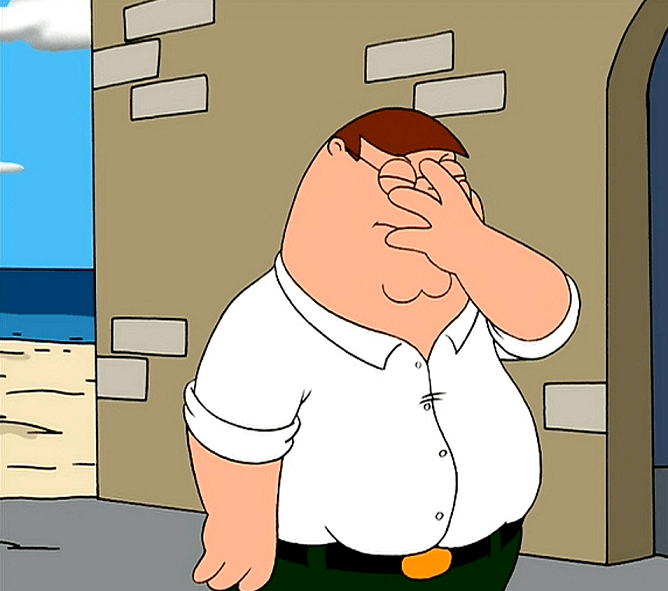
If there’s one bit of advice that I feel entirely qualified to give out it’s that you should force yourself to do a very small amount of volume when you’re just getting back into the gym, or doing a new workout. Untrained people can’t handle high volume, but they also don’t need high volume workouts to grow from. I knew this, I just couldn’t make myself do the smart thing instead of the dumb thing.
In fairness to myself, I did a great job of slowly increasing the volume in terms of the number of exercises done per session, and I forced myself to, if I was sore the day after the previous workout, to not increase the number of reps or weight for the corresponding exercise. This is great for not overtraining, and I think it also makes things psychologically easier for me when I don’t need to absolutely kill myself every time I step into the gym. It also makes the days when I am going for personal bests – in terms of recent performance not lifetime of course – more exciting.
June 11th was my first day back at the gym. Three days ago, July 2nd, I squatted, with no breaks, that same 95 lbs twenty three times in a row, with at least one rep in reserve. Yesterday I upgraded to the 35 lbs plates and squatted 115 lbs fifteen times, finished four sets plus three sets of elevated lunges, and have only very pleasant soreness today. This is still extremely low total strength both relative to my weight, as well as my own history. However, for just a few days over three weeks, the progress is immense.
To be doing this while losing ten pounds shows good evidence that the weight lost has been fat, something confirmed by a casual glance at my rapidly diminishing waistline. If anything, I have probably put on a pound or two of muscle.
In the next piece I’ll go over the benefits of cooking, and how to get into cooking if you’ve never done it before. I’m not exactly a cooking guru either, but there’s so much bullshit floating out there that overcomplicates things to the point of satire. For example, here’s Gordon Ramsay’s “quick and easy meatball recipe.” It has a mere 17 ingredients, not counting salt, pepper, and cooking oil.
See you next time.

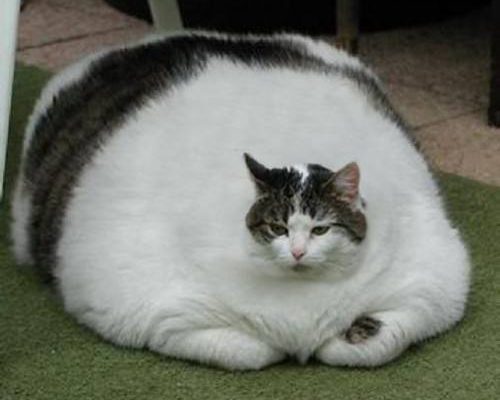




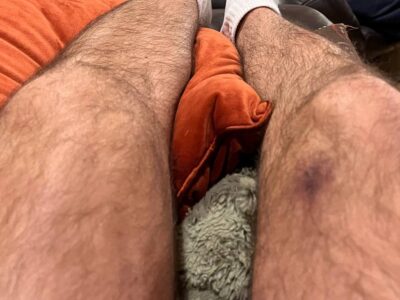

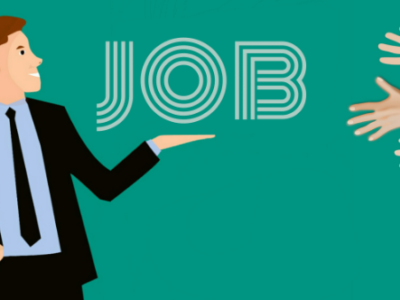







High rep squats is actually pretty big brain for weight loss. Doing cardio would just increase your appetite.
Long distance running is catabolic – lose muscle. Sprinting is anabolic – builds muscle up. You can google images of long distance runners versus sprinters to see what I mean. LDR is also famous for causing injuries.
Weight training also famous for injuries, especially to smaller muscle groups like rotator cuff. Smart to start off with body weight exercises to firm up the little groups first (little guys such as the RC, ligaments, joints) before going all in with lifting heavy.
As for diet, experiment and find what works best. Become the experimental group, where n=1.